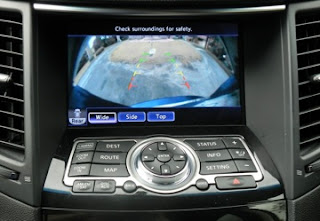WE’RE NOT NO. 1?
A news item caught my eye late yesterday, and I have a protest to register.
Inrix, a company that bills itself as “the global leader in traffic information and services,” has come out with a list of the Top Ten cities for the worst traffic in the country, and Miami isn’t on it.
How can that be?
Miami, the city where Dave Barry once wrote that “it is customary for everyone to drive according to laws of his or her country of origin.” (And we have many people in South Florida from many countries, including even the United States.)
According to Inrix, though, the city with the worst traffic congestion in 2011 was Honolulu.
Honolulu?
I thought everybody there got around town on a surfboard. Cowabunga!
Inrix, however, reports that a driver in Hawaii’s largest city wastes 58 hours a year fighting traffic congestion. (Your mileage may vary.)
A lousy 58 hours?
I sometimes think I do that in one week driving around South Florida’s streets and expressways, especially when it is raining. I don’t know what it is about people who live in South Florida but it seems like every time we get a shower -- which is often this time of year (a heads-up for you tourists) -- everybody takes that as a sign to jump into their cars and go for a drive.
Preferably during rush hour on an expressway and with their hazard lights flashing. (Instead of hazard lights, some simply leave the left turn signal blinking. Always the left one. Nobody here uses the right one, even when making a right turn.)
The fleet manager who provides me with new cars to drive every week has come to putting a bottle of water in each vehicle. I used to think he was just being nice. Now I see it’s like the canteen the camel driver gives you before you cross the Sahara. That bottle of water is a precaution to keep me from dying of thirst whilst stuck on the Palmetto Expressway.
But Inrix doesn’t even include us on the Top Ten.
You can read the report itself at the company’s website, www.inrix.com, but I wouldn’t recommend it. When you click on the right place on the home page, a lot of charts and graphs are available, but I didn’t have much better luck deciphering them than I did making it through that statistics class I took at IU back in 1962. (I may be able to figure out earned run averages, but that class went a little deeper.)
The pertinent information is the list of the Top Ten cities. Following Honolulu are Los Angeles (big surprise), San Francisco, New York, Bridgeport, Conn. (who knew?),
Washington, D.C. (that I can believe), Seattle, Austin, Texas, Boston, Chicago, and Philadelphia.
Washington, D.C. (that I can believe), Seattle, Austin, Texas, Boston, Chicago, and Philadelphia.
Actually, that’s a Top Eleven. No, Philly is not tied with Chicago. My only explanation is someone at Inrix doesn’t like Philly and wanted to make sure it was included.
As for those of us in South Florida, well, Miami may not have made the Top Ten worst cities for congestion, but a stretch of expressway that runs along the south edge of Miami International Airport ranks as the 13th most congested corridor. That’s “up,” if that is the proper word, from No. 42 in the 2010 rankings.
I take that as a sign we are headed for No. 1.





























